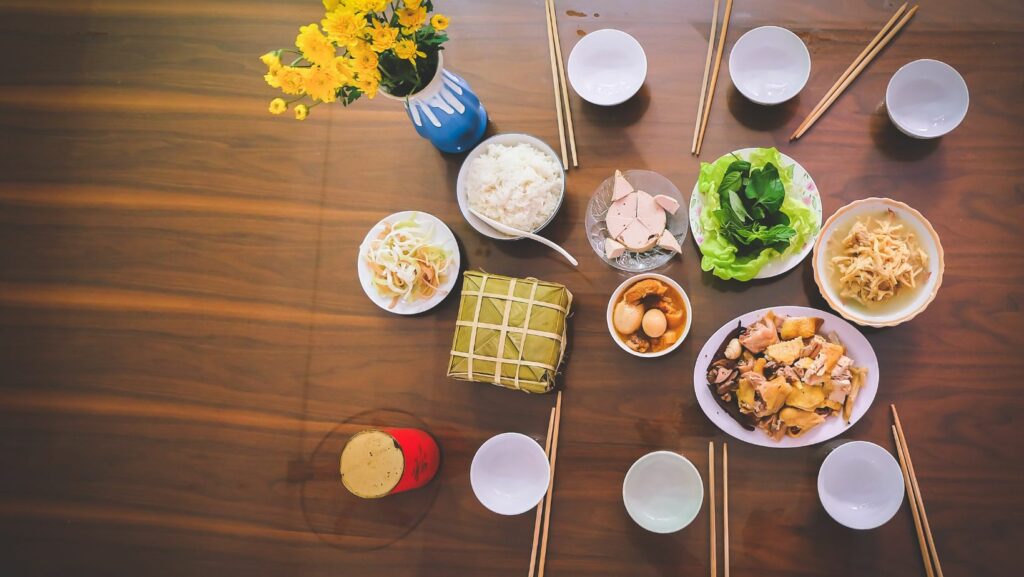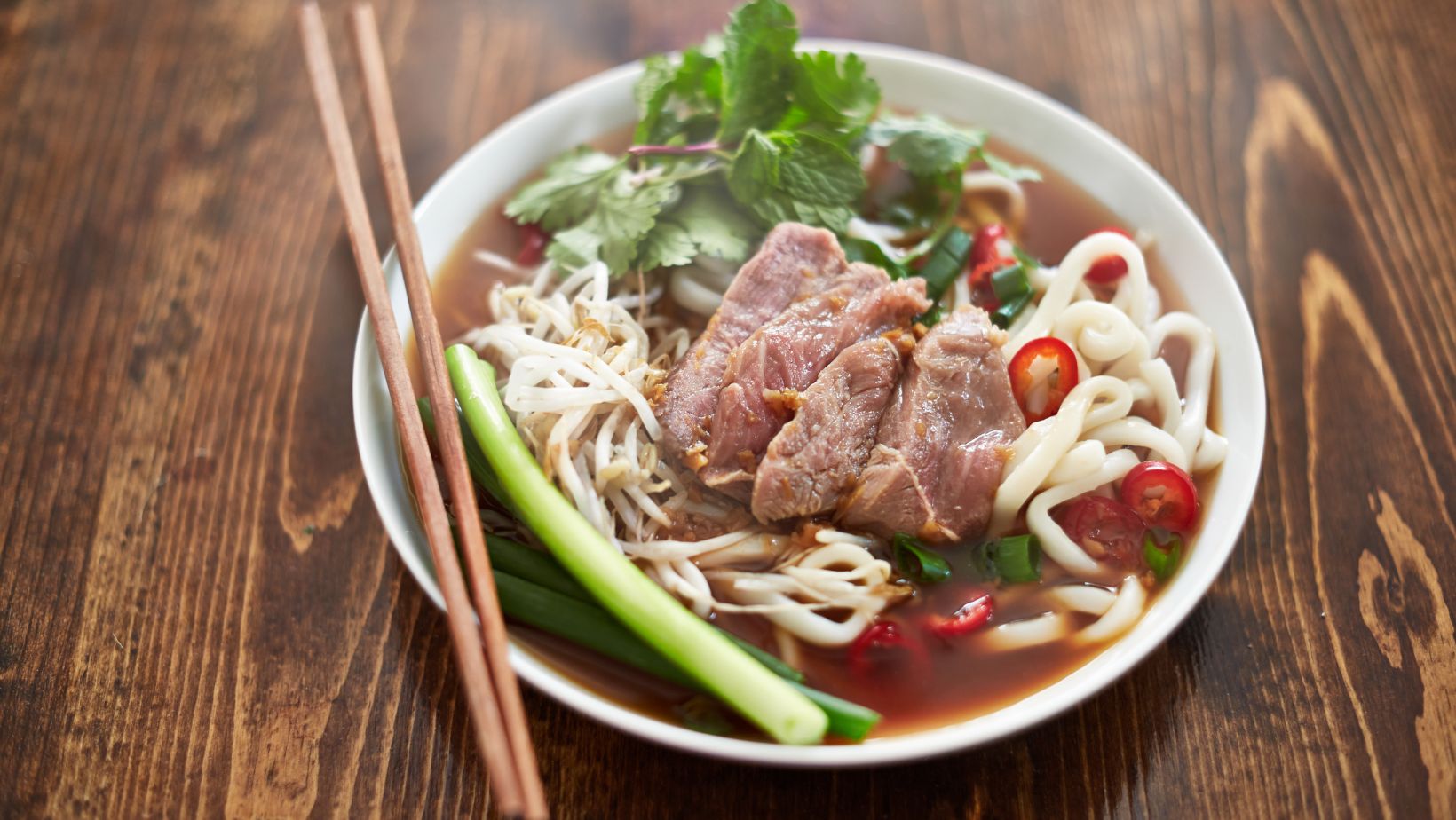
Vietnamese cuisine stands out as a beacon of health and flavor, weaving together a tapestry of fresh herbs, vibrant vegetables, and lean proteins. Renowned for its minimal use of oil and heavy reliance on herbs and vegetables, it offers a culinary journey that’s both tantalizing to the taste buds and kind to the waistline. This delightful balance makes Vietnamese food a preferred choice for anyone looking to infuse their diet with a nutritious yet delicious twist.
Healthy Vietnamese Food
Health Benefits of Vietnamese Food
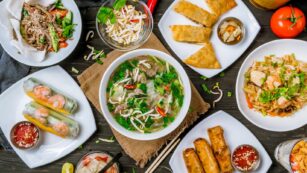 Vietnamese dishes typically feature high amounts of nutrients due to the generous use of fresh vegetables and herbs. These ingredients not only enhance flavors but also bring significant health advantages. For instance, Vietnamese cuisine offers a variety of dishes that support weight management because of their low calorie count and high fiber content, which aids in digestion and prolonged satiety. Protein sources, like fish and lean meats, are prominent, providing essential amino acids without excessive fats. Furthermore, the cuisine’s sparing use of oil and heavy sauces contributes to overall heart health by keeping cholesterol levels in check. Regular consumption of Vietnamese meals can help in reducing inflammation and enhancing immunity, thanks to the herbs like ginger, turmeric, and garlic, widely used across the cuisine.
Vietnamese dishes typically feature high amounts of nutrients due to the generous use of fresh vegetables and herbs. These ingredients not only enhance flavors but also bring significant health advantages. For instance, Vietnamese cuisine offers a variety of dishes that support weight management because of their low calorie count and high fiber content, which aids in digestion and prolonged satiety. Protein sources, like fish and lean meats, are prominent, providing essential amino acids without excessive fats. Furthermore, the cuisine’s sparing use of oil and heavy sauces contributes to overall heart health by keeping cholesterol levels in check. Regular consumption of Vietnamese meals can help in reducing inflammation and enhancing immunity, thanks to the herbs like ginger, turmeric, and garlic, widely used across the cuisine.
Key Ingredients in Healthy Vietnamese Food
The backbone of Vietnamese cuisine lies in its pristine selection of ingredients that are both palate-pleasing and health-promoting. Herbs such as basil, mint, and cilantro not only provide distinct flavors but also are loaded with antioxidants that protect against various diseases. Fresh vegetables like sprouts, lettuce, and carrots are staples in Vietnamese kitchens, vital for their vitamins and minerals. For protein, tofu and white meats dominate several dishes, ensuring that meals are satisfying without being overly fatty. Rice, a staple in the Vietnamese diet, serves as a gluten-free carbohydrate source that also aids digestion.
Popular Healthy Vietnamese Dishes
Vietnamese cuisine offers a variety of dishes that are as nutritious as they are flavorful. Here are some popular choices rich in health benefits.
Pho: A Nutritious Broth-Based Noodle Soup
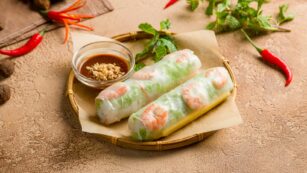 Pho consists of a clear, savory broth, lean cuts of meat – typically beef or chicken – and rice noodles, all garnished with fresh herbs like basil and cilantro. The broth, simmered for hours with spices such as star anise and cinnamon, not only imparts deep flavors but also offers anti-inflammatory properties. Pho’s nutritional profile is enhanced with its minimal use of oil and abundant use of fresh greens, providing a meal that supports digestive health and increases vitamin intake.
Pho consists of a clear, savory broth, lean cuts of meat – typically beef or chicken – and rice noodles, all garnished with fresh herbs like basil and cilantro. The broth, simmered for hours with spices such as star anise and cinnamon, not only imparts deep flavors but also offers anti-inflammatory properties. Pho’s nutritional profile is enhanced with its minimal use of oil and abundant use of fresh greens, providing a meal that supports digestive health and increases vitamin intake.
Goi Cuon: Fresh Spring Rolls
Goi Cuon, commonly known as fresh spring rolls, are a testament to the freshness and simplicity of Vietnamese cuisine. These rolls are packed with shrimp or pork, verdant herbs, and crisp vegetables, all tightly wrapped in translucent rice paper. They get dipped in a light fish sauce or peanut sauce for extra zest. High in protein and low in fats, Goi Cuon is an excellent choice for a light, refreshing meal that doesn’t compromise on taste or nutritional value.
Cooking Tips for Healthier Vietnamese Meals
Opt for Fresh Ingredients Over Processed Ones
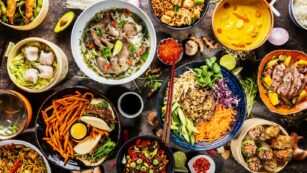 To create healthier Vietnamese meals, selecting fresh ingredients is critical. Vietnamese cuisine thrives on the freshness of its components like herbs, vegetables, and lean meats. Cooking with items that have undergone minimal processing ensures that the dishes not only taste fresher but also retain more of their nutritional content. For example, fresh garlic and ginger, rather than pre-minced versions, add zest and health benefits to dishes such as Pho.
To create healthier Vietnamese meals, selecting fresh ingredients is critical. Vietnamese cuisine thrives on the freshness of its components like herbs, vegetables, and lean meats. Cooking with items that have undergone minimal processing ensures that the dishes not only taste fresher but also retain more of their nutritional content. For example, fresh garlic and ginger, rather than pre-minced versions, add zest and health benefits to dishes such as Pho.
Incorporate a Variety of Vegetables
By including a diverse array of vegetables, one enhances not only the color and texture of the meal but also its vitamin and mineral content. Typical Vietnamese dishes such as Goi Cuon, allow for versatility in vegetable incorporation. Adding spinach, bell peppers, or carrots can boost the nutritional value while keeping the dishes aligned with traditional flavors.
Use Health-Conscious Cooking Methods
Steaming, grilling, and boiling are preferred cooking methods in Vietnamese cuisine as they require less oil and thus reduce calorie intake. For instance, steaming fish preserves its omega-3 fatty acids better than frying. This method not only maintains the integrity of the ingredients but also supports cardiovascular health by minimizing unhealthy fats.


